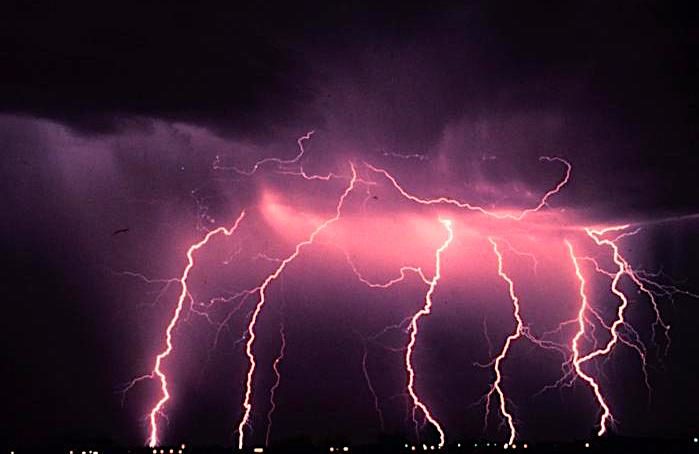
© NASALightning can bring in mid-air nuclear reactions.
After nearly 100 years of speculating that thunderstorms could trigger a nuclear reaction in the atmosphere, scientists have finally recorded the phenomenon for the first time.
Lightning produces flashes of electromagnetic radiation called gamma rays. Researchers have long theorized that
gamma rays, upon interacting with molecules in the air, can generate radioactive isotopes - elements with nuclei that aren't stable. That instability means they can randomly let off bursts of excess radiation including gamma rays, and result in a nuclear reaction.There have been reports of lightning-induced nuclear reactions before, going back to 1985, but none of them sufficiently reliable. Scientists had been able to create computer simulations of the phenomenon, but that was about it. On February 6, 2017, a team in Japan observed
a "clear signature of positron annihilation associated with γ-ray flashes." A paper describing the observations was
published Thursday in the journal Nature.
"The photonuclear reaction in the atmosphere has been theoretically expected [to be] triggered by such high energy radiation," lead author Teruaki Enoto, an astrophysicist from Kyoto University in Japan,
told ScienceAlert.Enoto and his colleagues recorded the reaction from the ground, according to ScienceAlert, using radiation detectors installed along the coastline at the Kashiwazaki-Kariwa nuclear power station in Niigata.
Leonid Babich, an experimental physicist from the Russian Federal Nuclear Centre,
wrote in a Nature commentary that the new observations represented unequivocal evidence that thunderstorms can indeed trigger photonuclear reactions.
"Enoto and colleagues' discovery is important because
it unveils a previously unknown natural source of isotopes in the atmosphere, in addition to the irradiation of Earth by cosmic rays," Babich wrote in the commentary.
These reactions show us a natural source for generating carbon, oxygen, and nitrogen isotopes that we'd previously never been able to confirm. And aside from the satisfaction of finally recording the existence of something which, according to the
Nature paper, scientists have been chasing since 1925, this new data might help us understand more about how thunder and lightning actually work.
"How lightning initiates inside thunderstorms is a complete mystery, and how lightning initially moves inside the storms is not at all clear," lightning expert Joseph Dwyer from the University of New Hampshire
told Axios.
The more we learn about how the lightning produces gamma-ray flashes, the better we understand the storms, themselves. "We have this idea that antimatter is something that only exists in science fiction. Who knew that it could be passing right above our heads on a stormy day?" Enoto
told phys.org.
[Link]
Wouldn't it be a trip if this is the true nature of the threat the Earth faces via cometary bombardment? There were apparently several supernovas that occurred in this area of space in the last few million years, so right there is a mechanism of formation.
But it won't really 'matter', because we will never see them coming; and if a big enough one hit, we would simply cease to exist! Isn't that cool?!